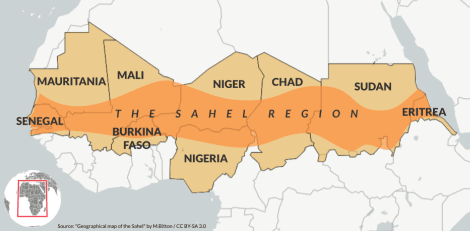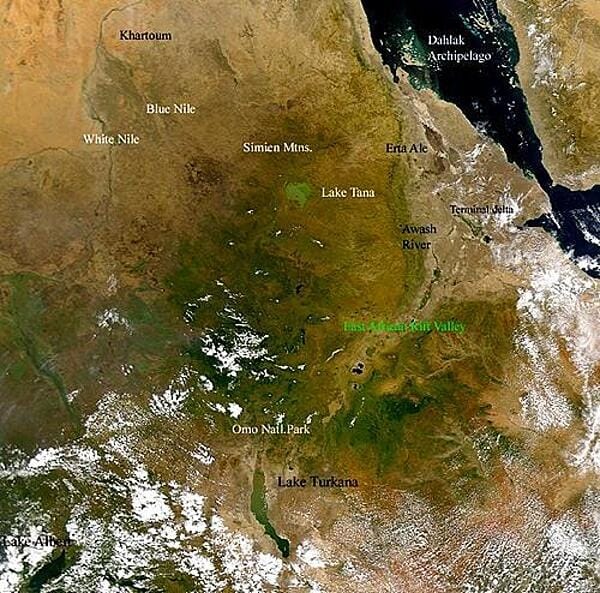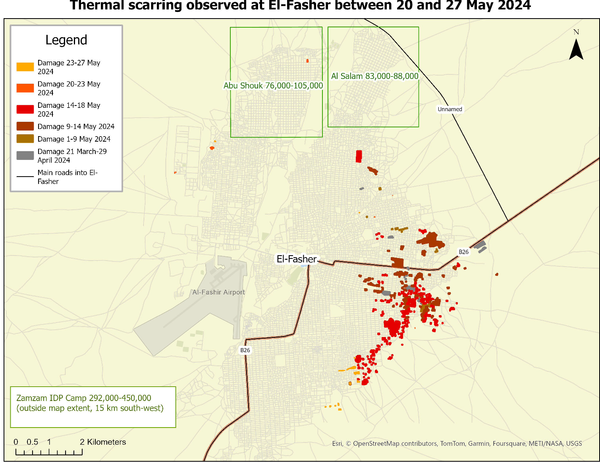When Might Chad Invade Sudan?

By Jeremy Lichtman
- There are at least 1 million Sudanese refugees currently in Chad. Chad has frequently played host to Sudanese refugees during previous conflicts, notably during the Darfur war several years ago.
- Chad and Sudan are ethnically similar, and the border runs through the middle of several tribe's traditional territory. Additionally, the Sahel region, a dry grassland, has similarities to the Eurasian steppes, and is inhabited by highly mobile horse and camel-borne populations.
- Chad recently expelled American troops from its territory, although it still plays host to members of the French military.
- Chad's military has recently been massing near the border with Sudan. There are several possibilities for what could be happening here. First, Chad has upcoming elections, and the current government may be concerned about Chadian rebel groups currently located in Sudan. Second, they may be attempting to slow down the stream of Sudanese refugees entering Chad; this has been destabilizing, particularly given the poor development index of the country. Access to food and water is already an issue. Last, this could be an opportunistic attempt to gain territory from a struggling neighbor.
- Why this matters: In addition to Sudan on the East, Chad is bordered on the north by Libya, which is also undergoing a protracted civil war. Anything that further destabilizes the region could spread quickly. Both Chad and Sudan have extensive and poorly developed mineral resources that are of geopolitical interest. Chad is fairly central within Africa, and an airbase within its territory could cover most of the continent. Sudan is strategically located on the Horn of Africa, which is a major oceanic trade route. Russia has military interests in Sudan, as well as other countries in the region. China is invested in Sudan's oil industry. A war between these countries therefore has larger geopolitical implications.
Explainer: Chad, Sudan and the Sahel
The Sahel—a strip of semi-arid land that runs the width of Africa below the Sahara Desert—has been plagued by extremist violence and instability in recent years, resulting in eight military takeovers since 2020. Cameron Hudson, a senior fellow in the Africa Program at the Center for Strategic and International Studies (CSIS), described the Sahel as “likely the most dangerous and unstable stretch of territory in the world today.” Source: https://thedispatch.com/newsletter/morning/u-s-losing-foothold-in-northwestern-africa/
The rest of the explainer below is from the CIA’s Fact Book:

Photo courtesy of NASA.
At the top left, the capital city of Sudan, Khartoum, is located at the convergence of the Blue Nile and the White Nile. Although the Blue Nile is much shorter than the White Nile, it contributes about 80% of the flow of the river. The Dahlak Archipelago is seen off the Red Sea coast of Eritrea. Because of their isolation, the numerous coral reefs of the Dahlak Archipelago are some of the most pristine in the world. North of the Rift Valley, in central Ethiopia, are the Simien Mountains and Lake Tana. Lake Tana is the source of the Blue Nile.
Military regimes favoring Islamic-oriented governments have dominated national politics since Sudan gained independence from Anglo-Egyptian co-rule in 1956. The 30-year reign of President Omar Hassan Ahmad al-BASHIR, following months of nationwide protests, ended with the military forcing him out in April 2019. In July 2019, the country’s Transitional Military Council signed an agreement with the Forces for Freedom and Change (an umbrella group of civilian actors) to form a transitional government under a Constitutional Declaration. Economist and former international civil servant Abdalla HAMDOUK al-Kinani was selected to serve as prime minister of a transitional government, which was to have guided the country to credible democratic elections in late 2022. In October 2021, the Sudanese military organized a takeover that ousted Prime Minister HAMDOUK and his government and replaced civilian members of the Sovereign Council (Sudan’s collective Head of State) with individuals selected by the military. HAMDOUK was briefly reinstated in November 2021 but resigned in January 2022.
As of June 2023, General Abd-al-Fatah al-BURHAN Abd-al-Rahman, the Chair of Sudan’s Sovereign Council and Commander-in-Chief of the Sudanese Armed Forces, serves as de facto head of state and government. He presides over a Sovereign Council consisting of military leaders, former armed opposition group representatives, and civilians appointed by the military. A cabinet of acting ministers handles day-to-day administration. These acting ministers are either senior civil servants (some appointed by former Prime Minister HAMDOUK and some selected by the military) or holdover ministers from Prime Minister HAMDOUK’s former cabinet who were appointed by former armed opposition groups that the military allowed to remain in their positions. The Sudanese Armed Forces have been embroiled in a fight with the paramilitary Rapid Support Forces since mid-April 2023.
Source: https://www.cia.gov/the-world-factbook/countries/sudan/




